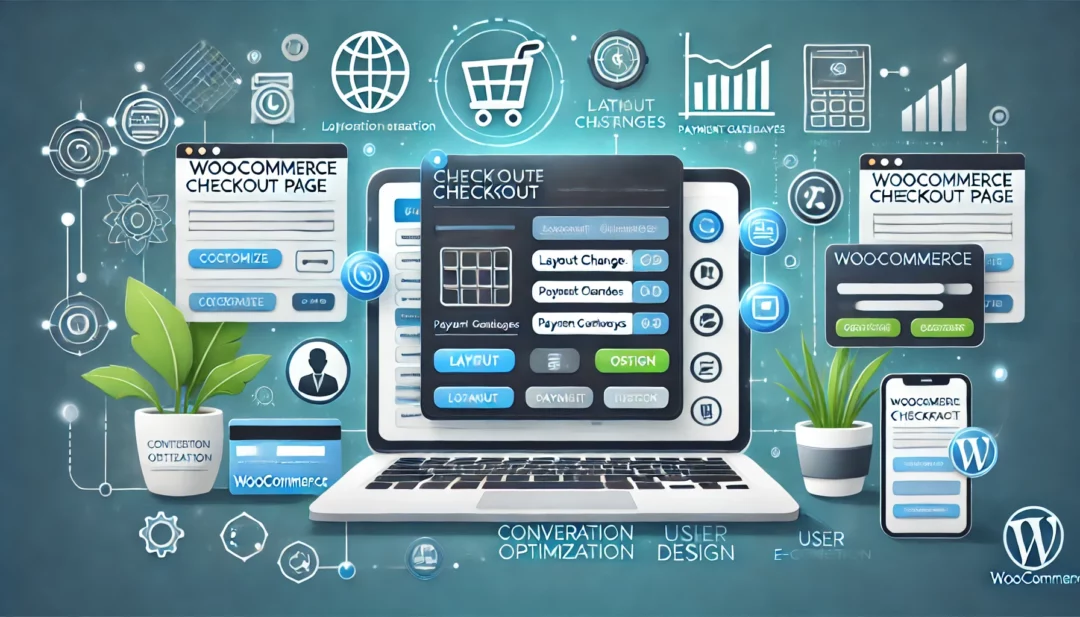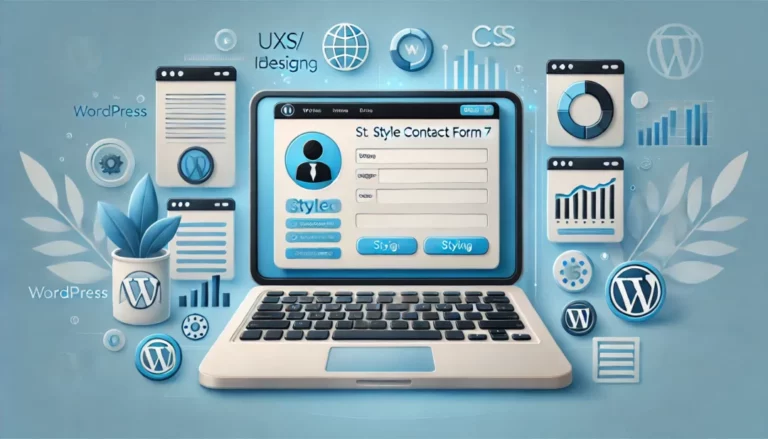
Customizing your WooCommerce checkout page can transform your customer’s experience and boost conversions. Whether you want to simplify the layout, add custom fields, or match your brand’s style, tailoring the checkout page ensures it aligns perfectly with your goals. It’s easier than you think with the right steps and tools.
You’ll start by accessing the WooCommerce settings to identify the changes you need. Then, use a plugin or custom code to implement those adjustments. From rearranging fields to adding unique branding elements, every tweak makes a difference. By the end, you’ll have a checkout page that’s not only functional but also optimized for your audience.
Why Customize The WooCommerce Checkout Page?
Customizing the WooCommerce checkout page enhances user experience and drives higher conversion rates. A tailored checkout process reduces friction and ensures visitors complete their transactions seamlessly. Standard checkout pages often lack functionality or branding elements crucial for your business goals.
Enhance User Experience
A customized checkout eliminates unnecessary steps or fields, streamlining the purchasing process. For example, reducing the number of required form fields decreases the time users spend at checkout, leading to lower abandonment rates.
Align With Brand Identity
Modifying the page design to incorporate your logo, colors, or custom fonts ensures consistency with your brand’s visual elements. Clear messaging and customized labels improve clarity and reassure users about their decisions.
Improve Functionality
Adding features like multiple payment methods or auto-filled address fields increases convenience for customers. You can integrate upsell or cross-sell options to boost the average cart value.
Comply With Regional Requirements
Customization allows you to adapt the checkout page for local regulations, such as GDPR compliance or specific tax fields. This ensures legal adherence and builds trust with buyers.
Increase Trust and Credibility
Personalizing the page with trust badges, security seals, or testimonials can reassure customers about the payment process’s safety. Simplifying the flow builds confidence and encourages repeat purchases.
Key Benefits Of Checkout Page Customization
Customizing the WooCommerce checkout page impacts overall performance and user engagement. Tailored adjustments improve usability, align aesthetics with your brand, and boost conversion rates.
Improving User Experience
Streamlining the checkout process reduces friction for customers, making it easier to complete their purchase. Simplified layouts, optimized field arrangements, and clear calls-to-action eliminate confusion. Adding auto-fill options, such as address suggestions, minimizes input effort, creating a seamless experience.
Available options, like guest checkout and account creation toggles, cater to varied preferences, reducing hesitation and cart abandonment.
Enhancing Conversion Rates
Customized checkout pages increase conversion potential by addressing customer concerns at critical moments. Trust signals, such as SSL badges, testimonials, and secure payment icons, reassure users.
Strategic element placement maximizes clarity. For example, upfront shipping fees or estimated delivery times foster transparency, encouraging quicker decisions and reducing dropoffs.
Reflecting Brand Identity
Consistent branding builds trust and strengthens customer recognition. Incorporating your logo, matching colors, and typography ensures a professional, cohesive presentation throughout your store.
Use personalized messages in the checkout flow to reinforce engagement. For instance, thank customers by name or highlight loyalty rewards, creating a positive buying experience.
Tools And Plugins For WooCommerce Checkout Page Customization
A range of tools and plugins simplifies WooCommerce checkout page customization. Choosing the right tool depends on your specific priorities, such as enhancing design, improving functionality, or ensuring compliance.
Popular Plugins To Consider
Use plugins designed specifically for checkout page modifications to save time and avoid manual coding. Here are some popular options:
- Checkout Field Editor by WooCommerce: Modify, add, or remove fields with ease. This plugin suits basic field customizations and enables complete form control.
- WooCommerce Checkout Manager: Provides extensive options, including file upload fields, conditional field logic, and multi-step checkout layouts.
- YITH WooCommerce Checkout Manager: Customizes fields and manages the checkout page layout while integrating seamlessly with other YITH plugins.
- CartFlows: Optimizes the funnel with well-designed checkout templates, one-click upsells, and A/B testing for better conversions.
- Direct Checkout for WooCommerce by QuadLayers: Minimizes cart abandonment with features like quick purchase and simpler navigation.
- Flexible Checkout Fields by WP Desk: Adjust field attributes, add custom labels, and fine-tune validation settings.
Each plugin serves unique purposes, so matching their offerings with your objectives ensures better results.
Comparing Free Vs Paid Tools
Evaluate whether free or paid tools align more closely with your project’s scope. Here’s a comparison for insight:
| Feature | Free Tools | Paid Tools |
|---|---|---|
| Basic Field Customization | Supported by most free plugins | Included |
| Conditional Logic | Limited or unavailable | Fully available |
| Templates | Basic options, fewer designs | Premium templates with advanced designs |
| Support & Updates | Community-based, irregular updates | Priority support and regular updates |
| Integrations | Restricted to core functions | Broader compatibility with other extensions |
| Advanced Analytics | Rare | Included in most paid versions |
Free tools work well for simple adjustments, but paid ones provide advanced options and dependable support if your business demands a higher level of customization. Compare features against your needs before deciding.
Step-By-Step Guide On How To Customize WooCommerce Checkout Page
Customizing your WooCommerce checkout page tailors the shopping experience to match your brand’s identity and customer needs. Follow this structured guide to effectively modify the checkout page and provide a smoother experience.
Editing Checkout Fields
Adjusting checkout fields simplifies the process by removing unnecessary entries or adding relevant ones.
- Access Checkout Field Options: Go to the WordPress dashboard, navigate to “WooCommerce,” then click “Settings.” Under the “Advanced” tab, select “Checkout” to find predefined field settings.
- Install Checkout Editor Plugin: Use tools like Checkout Field Editor if WooCommerce’s settings are insufficient. Install the plugin and activate it via the Plugins menu.
- Modify Fields: Use drag-and-drop functionality to rearrange, add new fields (e.g., additional address line), or remove unused ones like the “Company” field for individual buyers.
- Test Changes: After alterations, complete a test checkout to ensure all fields appear correctly and validate as expected.
Adding Custom CSS For Styling
Custom CSS enhances checkout aesthetics to better align with your website’s visual branding.
- Access Additional CSS Panel: From the WordPress admin dashboard, go to “Appearance” > “Customize” > “Additional CSS.”
- Write Custom Styles: Input CSS rules to adjust colors, padding, fonts, or button designs. For instance, to change the button color, use
.wc-button { background-color: #FF5733; }. - Target Specific Elements: Use browser developer tools (inspect element) to identify checkout element classes.
- Preview and Publish: Check the live preview for updates and save changes that match your branding.
Using Plugins For Advanced Features
Advanced features enhance functionality, providing an intuitive and feature-rich checkout experience.
- Select the Right Plugin: Choose from options like WooCommerce Checkout Manager for custom fields, CartFlows for sales funnels, or Stripe Payment Gateway for seamless payments.
- Install and Activate the Plugin: Navigate to “Plugins” > “Add New,” search for your desired plugin, and click “Install Now.” Activate it from the Plugins dashboard.
- Configure Plugin Settings: Access configuration via WooCommerce or the plugin’s separate menu. Enable features like conditional fields, upsells, or multi-step checkouts.
- Review Checkout Flow: Test the checkout page to ensure all added plugins function correctly, avoiding plugin conflicts.
Common Mistakes To Avoid During Checkout Page Customization
Avoiding mistakes is essential when customizing your WooCommerce checkout page to ensure it functions seamlessly and effectively enhances user experience. Below are common errors to look out for:
Neglecting Mobile Responsiveness
Ensure your checkout page is mobile-friendly, as over 58% of online shopping occurs on mobile devices. Customizations might break the mobile layout if you don’t check responsiveness during and after adjustments.
Overloading the Page with Features
Limit the number of fields and design elements. Adding too many fields or interactive components, like animations, might increase load times and confuse users, impacting conversions.
Using Incompatible Plugins or Themes
Verify compatibility between plugins and your active theme to prevent conflicts. For instance, outdated plugins or themes might introduce errors or fail to function as expected.
Ignoring Security Measures
Include essential security elements like SSL certificates and trust badges. Customers may abandon the checkout process if they perceive the transaction to be insecure.
Skipping User Testing
Test customizations for usability before going live. If you skip testing, errors in field arrangements or broken functionalities could disrupt the checkout flow and increase abandonment rates.
Failing to Backup Before Customization
Backup your site before making changes. Without a backup, you risk losing critical data or reverting to an unstable version following customization errors.
Disregarding Regulatory Compliance
Ensure compliance with relevant regulations like GDPR and PCI DSS. Forgetting to adhere to these can result in legal issues and a loss of customer trust.
Overcomplicating the Process
Keep the checkout process straightforward. For example, requiring unnecessary account registrations could deter customers from completing purchases.
Not Updating Changes Regularly
Monitor and update your checkout page customizations routinely. Avoid outdated designs or functions, as they can harm the user experience and reduce trust.
By identifying and addressing these common mistakes, you enhance the functionality and reliability of your WooCommerce checkout page.
Best Practices For An Optimized Checkout Page
Simplify The Checkout Process
Reduce unnecessary steps in your checkout workflow to provide a seamless experience. Limit the number of required fields to only essential ones like customer name, email, shipping address, and payment details. Avoid unnecessary account creation by enabling a guest checkout option.
Ensure Mobile Responsiveness
Design a checkout page that performs effectively on mobile devices. Use responsive layouts that adjust to various screen sizes, ensuring text legibility and button accessibility.
Use Trust Signals
Incorporate security badges, SSL certificates, and customer testimonials to enhance trust. Position these elements strategically near payment sections to reassure customers of secure transactions.
Optimize Field Design
Design fields that are clear and user-friendly. Label fields correctly, and add autofill functionality to speed up the process. For instance, auto-detecting the city and state based on the ZIP code shortens the entry time.
Highlight Error Messages Clearly
Display interactive error messages directly below incorrect fields. Provide actionable feedback like “Enter a valid email address” to help resolve issues quickly.
Provide Multiple Payment Options
Offer various payment methods, including credit cards, PayPal, and digital wallets like Apple Pay. Expand the range of options to accommodate diverse customer preferences.
Add Progress Indicators
Incorporate progress bars to give users an idea of how many steps are left. Clearly display stages like “Billing Information,” “Shipping Details,” and “Payment Confirmation.”
Maintain Consistent Branding
Include your company logo, colors, and fonts to create a cohesive design. Consistent branding reinforces trust and aligns the checkout page with your website.
Enable Customer Order Review
Allow customers to review orders before completing the purchase. Display product images, quantities, total costs, and applied discounts in a clear summary.
Conduct Usability Testing
Test the checkout page with different devices, browsers, and users. Gather feedback to identify pain points and make incremental improvements.
Conclusion
Customizing your WooCommerce checkout page is a powerful way to elevate your customers’ shopping experience and drive more conversions. By making thoughtful adjustments, you can create a streamlined, visually appealing, and functional checkout process that aligns perfectly with your brand.
Whether you use plugins, custom code, or a combination of both, the key is to prioritize simplicity, usability, and trust. Avoid common mistakes, test your changes thoroughly, and focus on meeting your customers’ needs. A well-optimized checkout page not only enhances satisfaction but also strengthens your business’s credibility and success.
Frequently Asked Questions
1. Why should I customize the WooCommerce checkout page?
Customizing the WooCommerce checkout page improves user experience, aligns design with your brand, reduces cart abandonment, and increases conversion rates. It also helps you comply with regional regulations and builds trust with customers by adding security and credibility elements.
2. What are the key benefits of a customized checkout page?
A customized checkout page enhances usability, simplifies the purchasing process, aligns aesthetics with your brand, and addresses customer concerns with trust signals. These improvements lead to higher conversion rates and customer satisfaction.
3. Can I customize the WooCommerce checkout page without coding?
Yes, you can use plugins like Checkout Field Editor, WooCommerce Checkout Manager, or CartFlows to customize the checkout page without coding. These tools allow you to modify fields, add features, and enhance design easily.
4. What are some best practices for WooCommerce checkout page optimization?
Best practices include simplifying the process by limiting fields, enabling guest checkout, ensuring mobile responsiveness, using trust signals like badges or testimonials, offering multiple payment options, and maintaining consistent branding.
5. How can I make my WooCommerce checkout mobile-friendly?
Ensure the checkout page uses a responsive theme or layout. Optimize field sizes, minimize the number of required fields, and use touch-friendly buttons and elements to create a seamless experience for mobile users.
6. Should I use free or paid plugins for customization?
Free plugins work well for basic adjustments, but paid plugins offer advanced features, broader integrations, and better support, making them ideal for businesses needing extensive customization.
7. How do I add custom fields to my WooCommerce checkout page?
You can add custom fields by using plugins like the Checkout Field Editor. After installation, navigate to the plugin settings to add, edit, or reorder fields as needed.
8. What should I avoid when customizing the checkout page?
Avoid overloading features, neglecting mobile responsiveness, skipping user testing, ignoring security measures, and failing to back up your data. Keep the process simple and compliant with regulations.
9. Can custom CSS be used for checkout page styling?
Yes, you can use custom CSS to adjust the layout, colors, and fonts of the checkout page to match your branding. Ensure changes are user-friendly and tested for compatibility across devices.
10. How do I test changes to the WooCommerce checkout page?
Conduct usability testing by simulating real transactions. Test the page on different devices and browsers to check for errors, ensure functionality, and gather user feedback for further improvements.
11. What plugins are best for WooCommerce checkout customization?
Popular options include Checkout Field Editor (for field management), WooCommerce Checkout Manager (for process enhancements), and CartFlows (for creating optimized sales funnels with checkout customization).
12. Can customized checkout pages reduce cart abandonment?
Yes, by simplifying the checkout process, adding trust signals, and optimizing the design, a customized checkout page reduces friction and encourages customers to complete their purchases.
13. Why is consistent branding important on the checkout page?
Consistent branding builds trust and recognition, reassuring customers they are purchasing from a credible source. Use your logo, colors, and personalized messages to maintain brand identity.
14. How can I increase trust during checkout?
Incorporate trust-building elements such as SSL certificates, security badges, reviews, testimonials, and clear error messages. Display contact information and offer a transparent return policy.
15. Is it necessary to comply with regional regulations on the checkout page?
Yes, adhering to regional regulations like GDPR or taxes is essential to avoid legal issues. Ensure your checkout is secure, transparent about data usage, and compliant with local laws.






